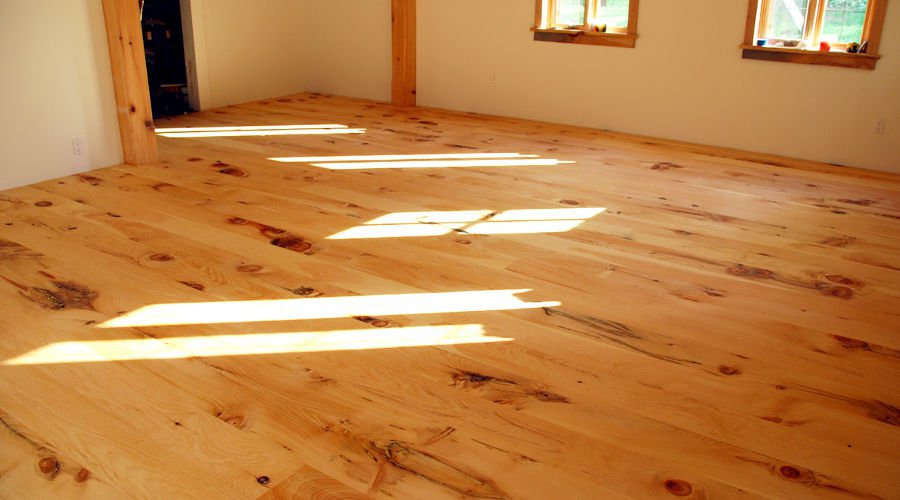Be careful with floors that look like they can be recoated.
Scuff sand floor between coats.
The reasons you may need to sand between coats are to de nib that is to take off dust specs and knock the tops off any bubbles in the finish.
The only type of bond that is possible between coats may be a mechanical bond created by sanding scratches.
While it is physically possible to recoat floors like these and even have the new coat bond well the damage will still be visible through the fresh coat of finish effectively preserved under plastic.
The finish on the floor in the photo at right is intact but a recoat won t help much.
And now you ll have to sand the entire floor with 220 grit sand paper and clean all the dust up.
Charles recommends you watch the 3 trace co.
This is an area where prevention is better than cure definitely applies.
Join charles to see the most important part of finishing your wood project to get a perfect glass smooth finish.
But you re correct sanding between coats of poly isn t stripping an old floor it s just scuffing up the previous coat of poly in preparation for the next one.
If you do have to sand between coats of polyurethane on floors because you didn t get to the second coat within the required time frame then that s a bummer.
Use a fine grit paper and run it over the whole floor you don t need much pressure.
Here is what you should look for.
It s true in my experience that most first coats make you look like a monkey s.
Sand the dried and cured first coat of polyurethane no sooner than 24 hours after applying it.
You can also sand to take care of drips etc but proper application technique should avoid those.
In most cases you will scuff sand a bare surface before applying anything and sand again between coats of paint or sealer.
Even easier for this step though would probably be a pole sander like the kind for drywall seams.
Remove the sanding dust first with.
Just kidding but i truly do hate sanding when i don t have to.

